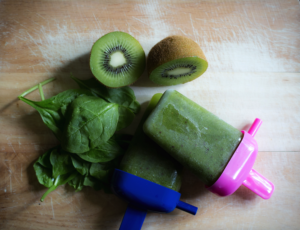Truth or Myth: Eating at Night Makes you Fat
/One of the myths that seems to have real staying power is that eating after 7pm will make you fat. I can’t tell you how many times people “confess” their eating “sin” to me that while they try not to eat after 7pm, they just can’t stop. I have good news for you. There isn’t anything magical that happens at 7pm. We aren’t Cinderella – our metabolism doesn’t turn back into a pumpkin when the clock strikes 7pm. (Sorry, couldn't resist using the pumpkin analogy there - I'm writing this on Hallowe'en afterall).
Hey, I understand why this myth persists. People love to learn that there is a simple, all-powerful reason why they can’t seem to lose weight. That there’s some secret that slim people know.
What’s more, when the so-called “simple” secret is unattainable for most of us, it empowers the diet industry by feeding in to the dieting-shame-guilt cycle that most women are stuck in. I.e., it’s your fault that you can’t organize your life well enough to eat before 7pm. And, you’re too weak to have the willpower to not eat again afterwards.
I have good news. Eating at night doesn’t make you fat.
If it did, every single person in Spain would be obese. Their tradition is to eat late at night. Last month in Barcelona, Granada, and Gran Canaria, I was amazed to see families with young children (we’re talking toddlers and preschoolers) out eating at cafes at 11pm.
Now me saying that doesn’t give you free reign to sit on the couch for hours every night mindlessly scarfing down entire bags of popcorn, chips and candy. Because that habit will cause weight gain. But it’s not the time on the clock that’s the problem here. Mindlessly eating loads of junk food day after day isn’t a healthy habit no matter what time the clock says.
So, what’s the solution? The solution depends on the root cause of your night-time hunger. First, do a little self-assessment. Why might you be hungry at night? It’s likely not your lack of willpower. There are a number of reasons. Some include:
We humans digest food and naturally become hungry again in about 4 hours. So, if you eat dinner at 6pm and you go to bed at 11pm, you likely will be hungry around 9:30-10pm.
If you watch TV, all the food ads will stimulate you to want to eat.
If you have skipped meals, or made some common eating mistakes earlier in the day, you may be experiencing rebound low blood sugar (which causes cravings for high-salt, high-fat, high-sugar, highly processed foods).
If your days are constant stress and you don’t have a lot of tools in your self-care toolbox, you may be craving comfort foods as a method of self-care.
If you live alone, you may be eating out of boredom and loneliness. (See note above re: comfort food and self-care).
Our bodies are amazing at learning patterns. You may have a learned association of eating at night even if you aren’t hungry.
Understanding these common causes of out-of-control eating at night, you can see how these are some steps to take to turn things around:
Don’t sweat it if it’s after 7pm by the time you get home from work/ the kids’ extra-curricular activities and get a healthy dinner on the table. Drop the guilt over how you’ve “failed” because you can’t make it all happen before 7pm. There is no problem with eating your dinner after 7pm. Instead, offer yourself a huge “congratulations” for making it all happen!
If you eat earlier and there will be more than 4 hours between dinner and bedtime, plan a healthy snack. It’s a great opportunity for a serving of vegetables or fruit paired with some protein-rich foods. An apple and cheese is a favourite evening snack of mine. So is edamame with raw carrots.
Turn off the TV. Choose other activities to wind down at night.
Build up your self-care toolkit.
Get more science-based nutrition tips. Sign up today for my e-newsletter.










 Rarely do I give a workshop on introducing solid foods to babies or feeding toddlers and preschoolers (including picky eaters) where a parent doesn’t ask how much food they should feed their child. It’s quite an easy question for me to answer. And, the answer applies to any meal or snack for a child of any age:
Rarely do I give a workshop on introducing solid foods to babies or feeding toddlers and preschoolers (including picky eaters) where a parent doesn’t ask how much food they should feed their child. It’s quite an easy question for me to answer. And, the answer applies to any meal or snack for a child of any age:















